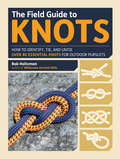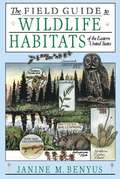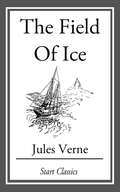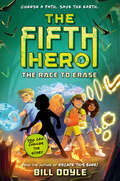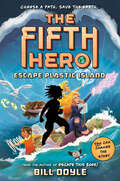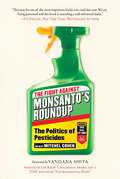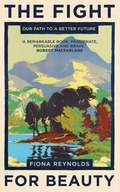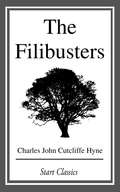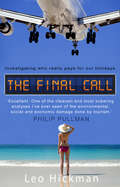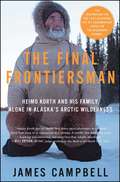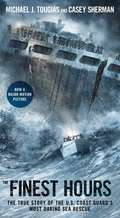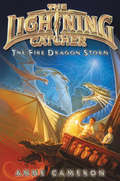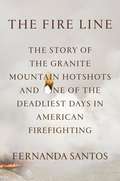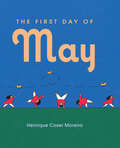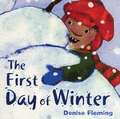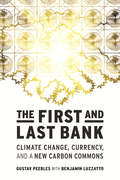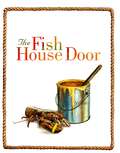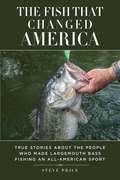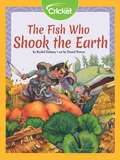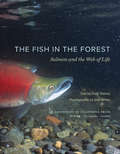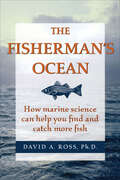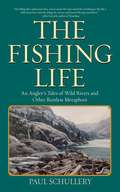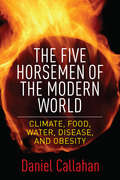- Table View
- List View
The Field Guide to Knots: How to Identify, Tie, and Untie Over 80 Essential Knots for Outdoor Pursuits
by Bob Holtzman<P>A Fasten-ating Guide to Knots for Every Adventure! The perfect knot can make any job quicker, easier, and safer—whether you need to build a shelter, tether a horse, rappel down a cliff, or moor a boat. In The Field Guide to Knots, veteran outdoorsman Bob Holtzman helps you: <br>Select and tie the right knot for any task <br>Identify and untie existing knots <br>Choose and maintain your rope, and more! <P>With more than 80 time-tested knots and more than 600 color photos, this Field Guide is indispensible for backpackers, climbers, sailors, anglers, hunters, equestrians—and anyone else who’s ever needed to change a sail, reposition a climbing rope, or splice a tent pole!
The Field Guide to Wildlife Habitats of the Eastern United States
by Janine M. BenyusA noted outdoors expert and an acclaimed illustrator have banded together to create a stunning picture of the wildlife in the eastern half of the United States. Complete with observation tips.
The Field of Ice
by Jules VerneAn exhilarating narrative of an obsessed British expediter by Jules Verne. This northward excursion led by Captain Hatteras is full of life-threatening adventures and hair-breadth escapes of him and his crew. As he discovers the truth about the polar terrain, this work presents amazing possibilities. A bitter-sweet ending awaits the readers in this mind-boggling thriller!
The Fifth Hero #1: The Race to Erase (The Fifth Hero #1)
by Bill DoyleCHOOSE YOUR PATH. CHANGE THE STORY. SAVE THE EARTH. From the creator of the interactive Escape This Book! series comes a new adventure series about climate superheroes in which YOU get to help save the planet by choosing which story line you think is the right one!The Calamity Corporation is determined to end life on Earth as we know it. The company has built hotels that orbit Earth and small cities on the moon and has plans to move the human population to Mars. The sinister corporation is determined to ruin Earth so that people have no choice but to leave it. Not so fast! Four kids who secretly possess the powers of land, air, sea, and creatures are about to change the course of history. These kids may not be the likeliest of heroes, but they are determined to stop Calamity Corporation from destroying Earth. And they have a secret weapon: a fifth hero. YOU! Throughout the book, there are three chances for you to help change the course of the story alongside our fearless team. Choose incorrectly and it's game over. But choose wisely and you might save the planet!
The Fifth Hero #2: Escape Plastic Island (The Fifth Hero #2)
by Bill DoyleFOUR KIDS. ONE EARTH. AND YOU ARE THE HERO THEY NEED. From the creator of the interactive Escape This Book! series, join the climate superheroes as they master the powers of earth, wind, sea, and creatures and use YOUR help to choose the right story line and save the planet!The Calamity Corporation is determined to destroy Earth. Their latest plot leaves &“ugly&” animals in the cold—literally. Any less-than-cute critter will be frozen and blasted into space. Luckily, five climate heroes have the skills to save the day.JARRETT can talk to animals…even if they don&’t always listen.MALIK masters water…but the floating garbage is a challenge.FREYA &‘s wind power everyone away..sometimes too powerfully.AGNES can dig up dirt and soil any evil plan.And YOU are THE FIFTH HERO!Make three decisions in this interactive adventure to help the heroes put the Calamity Corporation on ice. Choose incorrectly and it's game over. But choose wisely, and you might save the planet—and the story!
The Fight Against Monsanto's Roundup: The Politics of Pesticides
by Vandana Shiva Mitchel CohenA Comprehensive Look at the Worldwide Battle to Defend Ourselves and Our Environment Against the Peddlers of Chemical Poisons Chemical poisons have infiltrated all facets of our lives – housing, agriculture, work places, sidewalks, subways, schools, parks, even the air we breathe. More than half a century since Rachel Carson issued Silent Spring – her call-to-arms against the poisoning of our drinking water, food, animals, air, and the natural environment – The Fight Against Monsanto's Roundup takes a fresh look at the politics underlying the mass use of pesticides and the challenges people around the world are making against the purveyors of poison and the governments that enable them. The scientists and activists contributing to The Fight Against Monsanto's Roundup, edited by long-time Green activist Mitchel Cohen, explore not only the dangers of glyphosate – better known as “Roundup” – but the campaign resulting in glyphosate being declared as a probable cancer-causing agent. In an age where banned pesticides are simply replaced with newer and more deadly ones, and where corporations such as Monsanto, Bayer, Dow and DuPont scuttle attempts to regulate the products they manufacture, what is the effective, practical, and philosophical framework for banning glyphosate and other pesticides?The Fight Against Monsanto's Roundup: The Politics of Pesticides takes lessons from activists who have come before and offers a radical approach that is essential for defending life on this planet and creating for our kids, and for ourselves, a future worth living in.
The Fight for Beauty: Our Path to a Better Future
by Fiona ReynoldsWe are using the resources of this planet as if we had three to depend on, not one. The threat of climate change looms large, yet our vision for the future remains based on materialism rather than values. While our politicians compete for economic credibility, there is no one with any power or influence who is showing us a different path.Conservationist and campaigner Dame Fiona Reynolds makes the case for the power of beauty and how it can lead us towards solutions to present crises. She demonstrates the irresistible way in which it forces its way into our decisions and debates. A stirring polemic, The Fight for Beauty warns of the dark future ahead but also demonstrates that this isn't inevitable - an alternative future is within our reach, if there is a will and a want to work hard enough to achieve it.
The Filibusters
by Charles John HyneThis story deals with the participants in an expedition that successfully captures the presidency of a Central American republic. It is very exciting, the incidents being fresh and daring with not too much reliance placed on coincidence.
The Final Call: Investigating Who Really Pays For Our Holidays
by Leo HickmanNo industry in the world employs more people or is the world's largest foreign currency earner than tourism. Long billed as the cleanest industry for developing countries to invest in, tourism seems to offer everyone involved a positive experience.This is the official line, anyway. In truth, the reality is much more complex . For The Final Call Hickman travels the world on a range of holidays and finds that behind the sunny facade of pools, smiling locals, sightseeing trips and exquisite cuisine is an ugly reality and it is spreading unchecked to all corners of the globe. But none of us are going to stop holidaying and at the heart of this is a heartfelt attempt to discover the best way to holiday wherever you are.
The Final Frontiersman: Heimo Korth and His Family, Alone in Alaska's Arctic Wilderness
by James CampbellThe inspiration for The Last Alaskans--the eight-part documentary series on Animal Planet! Called "[one of] the greatest life-or-death-tales ever told" (Esquire), James Campbell's inimitable insider account of a family's nomadic life in the unshaped Arctic wilderness "is an icily gripping, intimate profile that stands up well beside Krakauer's classic [Into the Wild], and it stands too, as a kind of testament to the rough beauty of improbably wild dreams" (Men's Journal).Hundreds of hardy people have tried to carve a living in the Alaskan bush, but few have succeeded as consistently as Heimo Korth. Originally from Wisconsin, Heimo traveled to the Arctic wilderness in his feverous twenties. Now, more than three decades later, Heimo lives with his wife and two daughters approximately 200 miles from civilization--a sustainable, nomadic life bounded by the migrating caribou, the dangers of swollen rivers, and by the very exigencies of daily existence. In The Final Frontiersman, Heimo's cousin James Campbell chronicles the Korth family's amazing experience, their adventures, and the tragedy that continues to shape their lives. With a deft voice and in spectacular, at times unimaginable detail, Campbell invites us into Heimo's heartland and home. The Korths wait patiently for a small plane to deliver their provisions, listen to distant chatter on the radio, and go sledding at 44° below zero--all the while cultivating the hard-learned survival skills that stand between them and a terrible fate. Awe-inspiring and memorable, The Final Frontiersman reads like a rustic version of the American Dream and reveals for the first time a life undreamed by most of us: amid encroaching environmental pressures, apart from the herd, and alone in a stunning wilderness that for now, at least, remains the final frontier.
The Finest Hours: The True Story of the U.S. Coast Guard's Most Daring Sea Rescue (True Rescue Chapter Bks.)
by Casey Sherman Michael J. TougiasThe story behind the major motion picture from Disney—starring Chris Pine, Eric Bana, and Casey Affleck—written by a recognized master of the genre—&“a blockbuster account of tragedy at sea&” (The Providence Journal).It&’s the winter of 1952 and a ferocious Nor&’easter is pounding New England with howling winds and seventy-foot seas. Two oil tankers get caught in the violent storm off Cape Cod, its fury splitting the massive ships in two. Back on shore are four young Coast Guardsmen who are given a suicide mission. They must save the lives of the seamen left stranded in the killer storm, and they have to do it in a tiny lifeboat. The crew is led by Bernie Webber, who has to rely on prayer and the courage of his three crewmembers to pull off the impossible. As Webber and his crew sail into the teeth of the storm, each man comes to the realization that he may not come back alive. They&’ve lost all navigation and have no idea where the stranded seaman are, and have no idea how to get back home. Whether by sheer luck or divine intervention, the crew stumbles upon the wounded ship in the darkness. More than thirty men appear at the railings of the SS Pendleton, all hoping to be saved. Once again, Webber and his crew face a daunting challenge. How can they rescue all these men with their tiny lifeboat? Dripping with suspense and high-stakes human drama, The Finest Hours has incredible and astonishing true-to-life heroism and action-packed rescue scenes. This &“marvelous and terrifying yarn&” (Los Angeles Times) &“deserves a place as a classic of survival at sea&” (The Boston Globe).
The Fire Dragon Storm
by Anne CameronIn the fast-paced conclusion to The Lightning Catcher quartet, storm prophet Angus McFangus makes one final attempt to rescue his parents and save his school from the villainous Scabious Dankhart. This school adventure series is a mix of Storm Chasers and The Mysterious Benedict Society. Action-packed, lighthearted, and perfect for reluctant readers, with black-and-white illustrations by Newbery Honor author Victoria Jamieson!Halfway through their second year at the Perilous Exploratorium for Violent Weather and Vicious Storms, Angus McFangus and his two best friends, Indigo Midnight and Dougal Dewsnap, are being heatedly pursued by Scabious Dankhart. In an attempt to foil Dankhart, who is already holding Angus's parents as prisoners, Angus and his friends fake their own deaths and go into hiding within the Exploratorium itself. When they discover the existence of blue-dragon scales that allow a storm prophet to control multiple fire dragons at once, the trio goes on a quest to locate all four scales. As the single living storm prophet, Angus is the only person who can control the dragon scales and use them to defeat Dankhart and his powerful lightning tower.
The Fire Line: The Story of the Granite Mountain Hotshots and One of the Deadliest Days in American Firefighting
by Fernanda SantosWhen a bolt of lightning ignited a hilltop in the sleepy town of Yarnell, Arizona, in June of 2013, setting off a blaze that would grow into one of the deadliest fires in American history, the twenty men who made up the Granite Mountain Hotshots sprang into action. An elite crew trained to combat the most challenging wildfires, the Granite Mountain Hotshots were a ragtag family, crisscrossing the American West and wherever else the fires took them. The Hotshots were loyal to one another and dedicated to the tough job they had. There's Eric Marsh, their devoted and demanding superintendent who turned his own personal demons into lessons he used to mold, train and guide his crew; Jesse Steed, their captain, a former Marine, a beast on the fire line and afamily man who wasn't afraid to say "I love you" to the firemen he led; Andrew Ashcraft, a team leader still in his 20s who struggled to balance his love for his beautiful wife and four children and his passion for fighting wildfires. We see this band of brothers at work, at play and at home, until a fire that burned in their own backyards leads to a national tragedy. Impeccably researched, drawing upon more than a hundred hours of interviews with the firefighters' families, colleagues, state and federal officials, and fire historians and researchers,New York Times Phoenix Bureau Chief Fernanda Santos has written a riveting, pulse-pounding narrative of an unthinkable disaster, a remarkable group of men and the raging wildfires that threaten our country's treasured wild lands.
The First Day of May
by Henrique Coser MoreiraHere is a book to celebrate firsts. That first magical day of spring, when it seems the whole world is bursting with life. That first time bursting out of your house after being cooped up for SO long. Your first time on the swingset. Your first time seeing a butterfly. Your first time exploring the world with someone you love. From Henrique Coser Moreira comes a wordless ode to joy and discovery that will stir readers young and old. P R A I S E ★ "Pure joy." –BookPage (starred) ★ "All the delights of spring are found within the covers in this charming, wordless picture book." –School Library Journal (starred) ★ "Ivan Brunetti by way of Rowboat Watkins, and readers will sense the opportunities waiting just outside their own doors. A joyous adventure, bright and brimming with exuberance." –Booklist (starred) ★ "This wordless book celebrates—with abundant style—the arrival of spring… playful and exceptionally funny… A breath of fresh air, in more ways than one." –Horn Book (starred) "A quirky and buoyant romp through spring." –Kirkus "Wordless panels mix the whimsical and the mundane in depicting a child’s exuberant outdoor exploits on the titular first of May." –Publishers Weekly
The First Day of Winter
by Denise FlemingA snowman comes alive as the child building it adds pieces during the first ten days of winter.
The First Rule of Climate Club
by Carrie FirestoneAn eighth grader starts a podcast on climate activism and rallies her friends to create lasting change in their local community and beyond, in this companion to Dress Coded.When Mary Kate Murphy joins a special science pilot program focused on climate change, the class opens her eyes to lots of things she never noticed before about her small suburban town: Kids waste tons of food at school without a second thought. Parents leave their cars running in the pick-up lane all the time. People buy lots of clothes they don&’t really need. Some of her friends who live in the city and are bused to her school don&’t always feel included. And the mayor isn&’t willing to listen to new ideas for fixing it all. Mary Kate and her friends have big plans to bring lasting change to their community and beyond. And now is the time for the young people to lead and the leaders to follow—or get out of the way.
The First and Last Bank: Climate Change, Currency, and a New Carbon Commons (One Planet)
by Gustav PeeblesA groundbreaking approach to currency and community that may allow us to seize carbon from the atmosphere—and offer a new tool in the fight against climate change.Through the ages, currencies have been based on all manner of objects—from tobacco leaves to salt to gold to collateralized debt obligations. The only thing that this odd assortment of objects shares is the communal belief that these objects could harness and direct economic growth—that they are, in a sense, fertile. In The First and Last Bank, Gustav Peebles and Benjamin Luzzatto propose that atmospheric carbon could be seen anew as fertile in this same sense. In other words, carbon, rather than loom as waste in our skies, could instead be &“drawn down&” to the earth by millions of currency users and the communally owned banks they rely on, where it could serve as a foundation of new biological life.Seeing currency as a powerful tool for collective action, the authors argue that dovetailing developments in digital currencies and the biosequestration of carbon have, together, made a new and radical intervention in the climate battle possible: a nonproprietary currency backed by sequestered carbon. This new currency would be managed via Wikipedia-style open-source policies that privilege sustainability and equity over endless growth and pollution. Because it is backed by sequestered carbon, the use of the currency would draw gaseous carbon out of the atmosphere and push it back into the ground, following the exact same trajectory as gold during the era of the international gold standard. While it is no silver bullet, such a currency would act as a necessary complement to wide-scale mitigation efforts, at the same time engaging ordinary citizens in the fight to reduce the dangerous levels of carbon in our atmosphere.
The Fish House Door
by Robert BaldwinShawn comes from a long line of island lobstermen. His father, grandfather, and great-grandfather have all hauled traps, baited pockets, painted buoys, and cleaned their brushes on the door of the same fish house for decades. To Shawn, it's just a weathered old piece of wood with broken hinges. But when an art dealer comes to visit, he gives Shawn a new perspective on the fish house door, and a fresh look at the people and traditions that have shaped his past and will chart his future. The Fish House Door, illustrated by rising star Astrid Sheckels, won the 2010 Moonbeam Award (Gold Medal) for Best Picture Book in the All Ages category.
The Fish That Changed America: True Stories about the People Who Made Largemouth Bass Fishing an All-American Sport
by Steve Price Slaton L White Kevin VandamFrom boats and baits to rods and reels to tips and tactics, bass fishing has been a magnet of innovation for almost a century.Bass fishing changed from pastime to business in part because of competitive tournaments and the publicity they generated. That publicity, in turn, sparked a demand for more and more information from the tournament fishermen themselves--how they caught bass--so in essence, the sport fed upon itself. Author Steve Price has interviewed dozens of anglers over the past few years, and he fits each of their stories into a complicated puzzle that forms a comprehensive tale of competitive record holders and fishing industry insiders alike.The Fish That Changed America is not simply about tournament bass fishing, although some of the stories included here do involve competitive anglers. Rather, Price has tried to embrace a wider view of the entire sport and to show how different facets of bass fishing meshed so perfectly at the same time, leading to the state of the industry today. The participants--those who laid the foundation for what all bass anglers today enjoy--tell their own stories of what happened during those not-so-long-ago years. Many of the stories, such as the standing room-only funeral for a famous largemouth bass, touch on far-ranging topics that all anglers will enjoy.
The Fish Who Shook the Earth
by Rachel DelaneyKashima, a god in Edo, Japan, resides in his shrine to protect the people from Namazu, a catfish, from causing earthquakes that devastate the lives of the villagers. When Kashima helps one of the villagers, Namazu must decide whether to obey Kashima and stay put or swim and potentially endanger the lives of the villagers.
The Fish in the Forest
by Dale StokesThe Fish in the Forest is an elegantly written, beautifully illustrated exploration of the complex web of relationships between the salmon of the Pacific Northwest and the surrounding ecosystem. Dale Stokes shows how nearly all aspects of this fragile ecosystem--from streambeds to treetops, from sea urchins to orcas to bears, from rain forests to kelp forests--are intimately linked with the biology of the Pacific salmon. Illustrated with 70 stunning color photographs by Doc White, The Fish in the Forest demonstrates how the cycling of nutrients between the ocean and the land, mediated by the life and death of the salmon, is not only key to understanding the landscape of the north Pacific coast, but is also a powerful metaphor for all of life on earth.
The Fisherman's Ocean: How Marine Science Can Help You Find and Catch More Fish
by David A Ross PhDThis volume &“clearly explains how marine science can help saltwater anglers catch more and bigger fish . . . comprehensive yet accessible&” (Booklist). Here at last, in layman&’s terms, is a fisherman's guide to the habitat and behavior of saltwater fish. The author, an oceanographer and avid fly fisherman, explains the marine environment and the factors that affect where game fish congregate—everything from how they move with tides and currents to what they see, smell, taste, and hear. The copiously illustrated text covers inshore and offshore habitat and will prove invaluable to anyone who fishes in saltwater, whether in the surf, on the flats, or out at sea. The ocean is vast. It pays to be educated.
The Fishing Life: An Angler's Tales of Wild Rivers and Other Restless Metaphors
by Paul SchulleryThe Fishing Life is an entertaining anthology of fishing anecdotes and well-researched articles from across Paul Schullery’s research and fishing career. The author offers up stories, essays, farces, daydreams, and ruminations that will engage readers of all kinds.Of course, being a fisherman and living the fishing life goes beyond just those days spent with rod and reel in hand. It is something that occupies your mind and your heart, not just your hands. As such, this collection is not only about intense fishing moments, but also “a book about those long stretches of thinking, hoping, daydreaming, and otherwise getting ready that occupy fishermen between those moments.” It is truly a way of life.Whether you’re looking for informal advice or deep reflections related to the sport and art of fishing, The Fishing Life is sure to catch your fancy—and give you plenty to dream about, when you can’t be on the water.
The Fishmeal Revolution: The Industrialization of the Humboldt Current Ecosystem
by Kristin A. WintersteenOff the Pacific coast of South America, nutrients mingle with cool waters rising from the ocean’s depths, creating one of the world’s most productive marine ecosystems: the Humboldt Current. When the region’s teeming populations of fish were converted into a key ingredient in animal feed—fishmeal—it fueled the revolution in chicken, hog, and fish farming that swept the United States and northern Europe after World War II.The Fishmeal Revolution explores industrialization along the Peru-Chile coast as fishmeal producers pulverized and exported unprecedented volumes of marine proteins to satisfy the growing taste for meat among affluent consumers in the Global North. A relentless drive to maximize profits from the sea occurred at the same time that Peru and Chile grappled with the challenge of environmental uncertainty and its potentially devastating impact. In this exciting new book, Kristin A. Wintersteen offers an important history and critique of the science and policy that shaped the global food industry.
The Five Horsemen of the Modern World: Climate, Food, Water, Disease, and Obesity
by Daniel CallahanIn recent decades, we have seen five perilous and interlocking trends dominate global discourse: irreversible climate change, extreme food and water shortages, rising chronic illnesses, and rampant obesity. Why can't we make any progress in counteracting these problems despite vast expenditures of intellectual, institutional, and social capital? What makes these global emergencies the "wicked problems" that resist our best efforts and only grow more daunting?Daniel Callahan, noted author and the nation's preeminent scholar in bioethics, examines these global problems and shines a light on the institutions, practices, and actors that block major change. We see partisan political and ideological forces, old-fashioned hucksters, and trumped-up scientific disagreements but also the problem of modern progress itself. Obesity, anthropogenic climate change, degenerative diseases, ecological degradation, and global famine are often the unintended consequences of unchecked industrial growth, insatiable eating habits, and technologically extended life spans. Only through well-crafted political, regulatory, industrial, and cultural counterstrategies can we change enough minds to check these threats. With big thinking on issues that are usually evaluated separately, this book is sure to scramble partisan divides and provoke unusual, heated debate.
